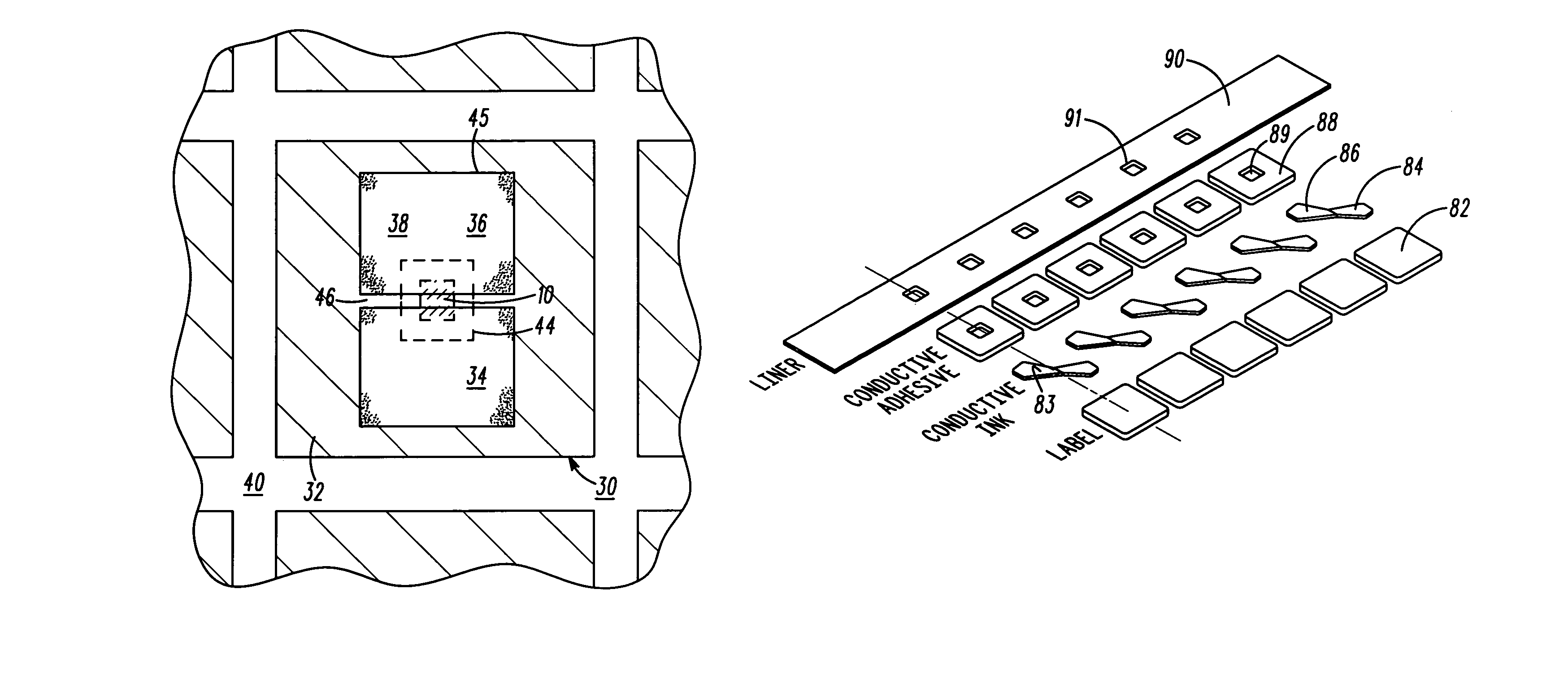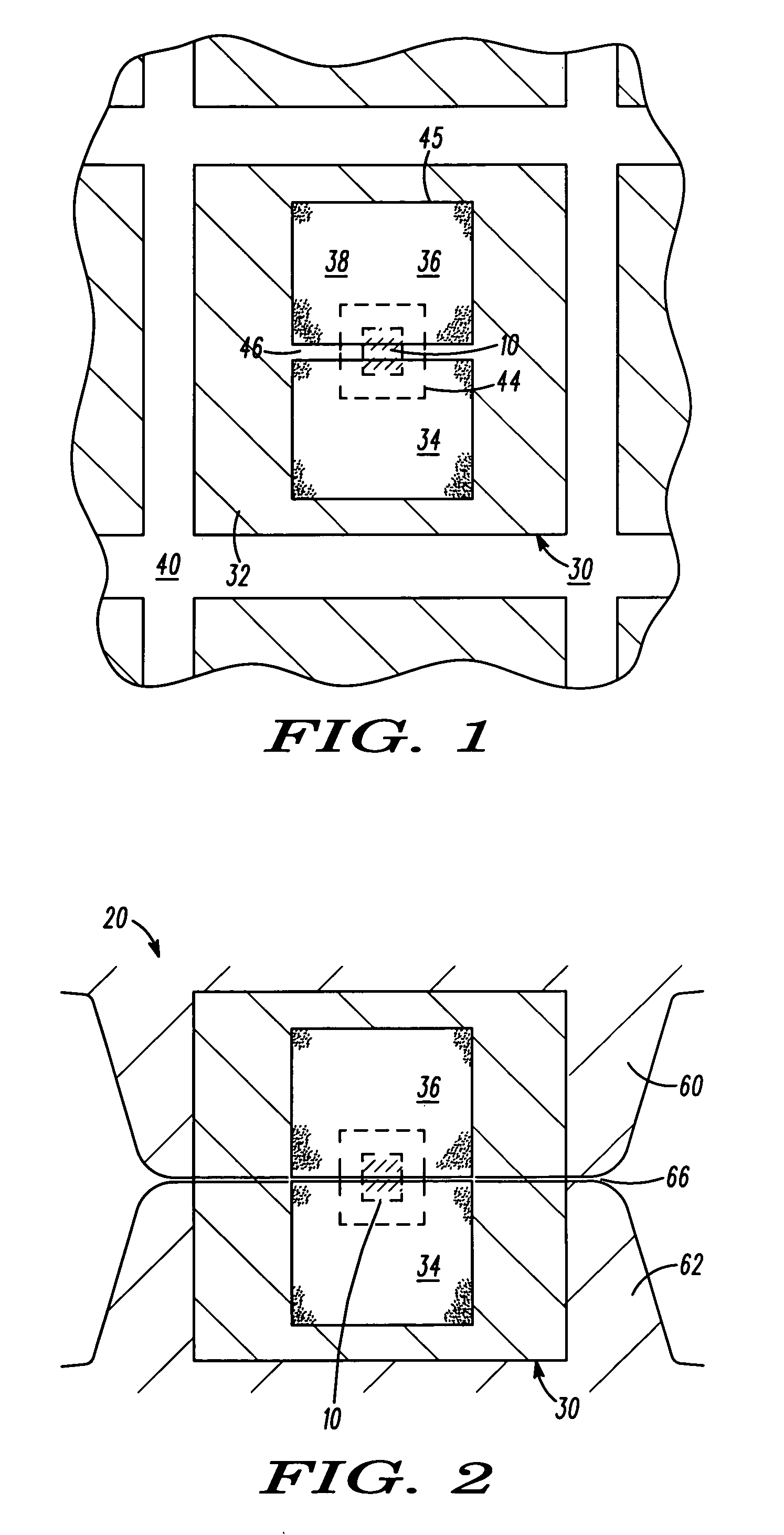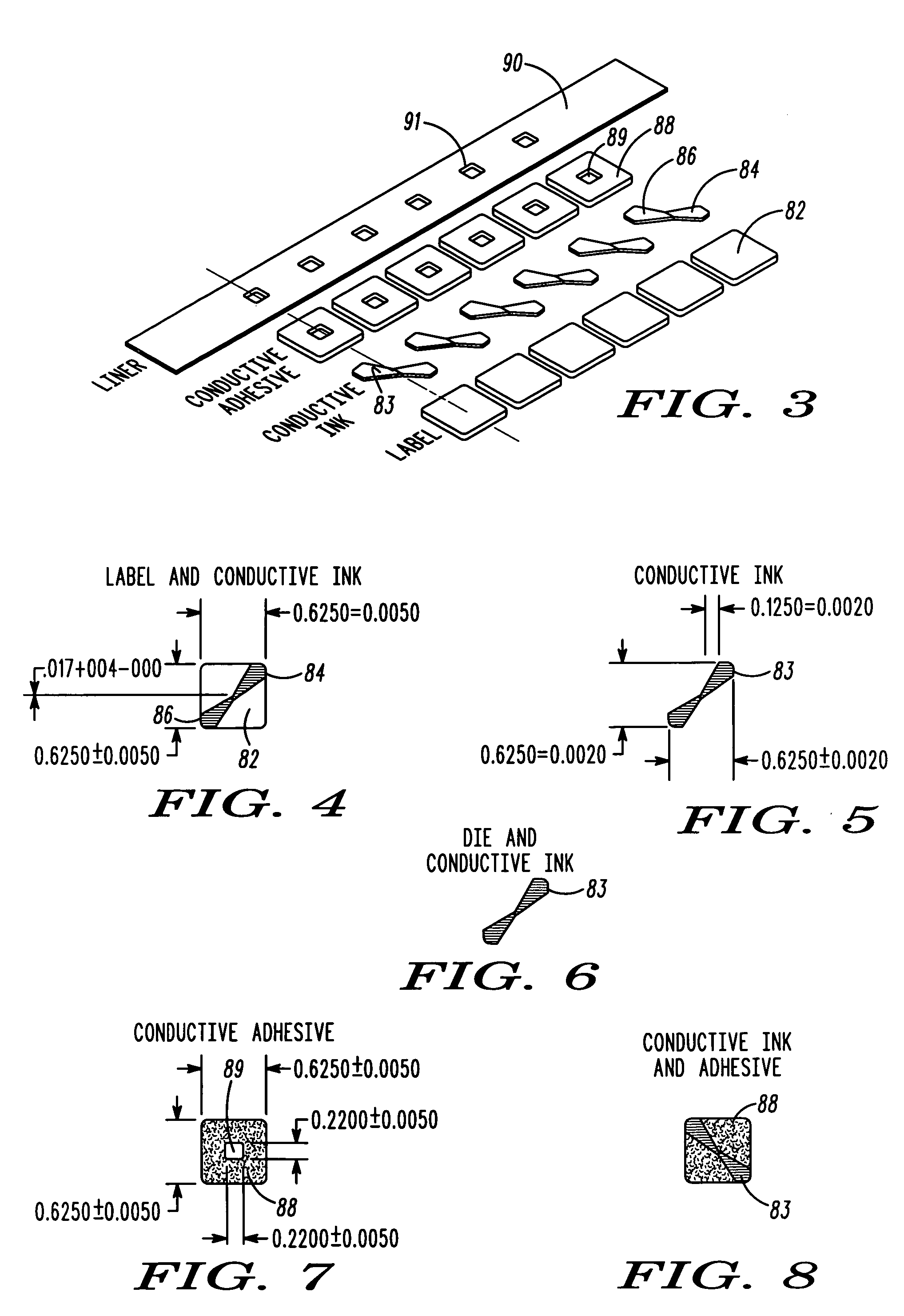Circuit chip connector and method of connecting a circuit chip
a circuit chip and connector technology, applied in the field of interposers, can solve the problems of reducing the accuracy required for placement of ics and silver being an expensive substitute, and achieve the effect of quick and easy attachment of ics
- Summary
- Abstract
- Description
- Claims
- Application Information
AI Technical Summary
Benefits of technology
Problems solved by technology
Method used
Image
Examples
Embodiment Construction
[0038]A thin film circuit, shown as an antenna 20 (or a similar circuit made from metallized film or other metallized flex circuit) can be made from a thin etched or stamped foil, typically manufactured from a thin foil of copper, copper-alloy, or nickel-iron alloy by stamping or etching. The etching or stamping creates patterns on strips that become antennas. Other methods of making an antenna include printing a conductive ink. This invention relates to ICs 10, which are joined and electrically connected to individual antennas 20, focusing on the interposer 30, its substrate 32, and the printing of contact pads 34 and 36 thereon onto which the IC 10 is incorporated. The layer of anisotropically conductive pressure sensitive adhesive 38 makes contact with connectors of the IC 10 as to interconnect the antenna 20 and the IC 10. Pressure sensitive adhesives are selected for ease of application, but other adhesives are available though not necessarily preferred. Two different adhesives...
PUM
 Login to View More
Login to View More Abstract
Description
Claims
Application Information
 Login to View More
Login to View More - R&D
- Intellectual Property
- Life Sciences
- Materials
- Tech Scout
- Unparalleled Data Quality
- Higher Quality Content
- 60% Fewer Hallucinations
Browse by: Latest US Patents, China's latest patents, Technical Efficacy Thesaurus, Application Domain, Technology Topic, Popular Technical Reports.
© 2025 PatSnap. All rights reserved.Legal|Privacy policy|Modern Slavery Act Transparency Statement|Sitemap|About US| Contact US: help@patsnap.com



